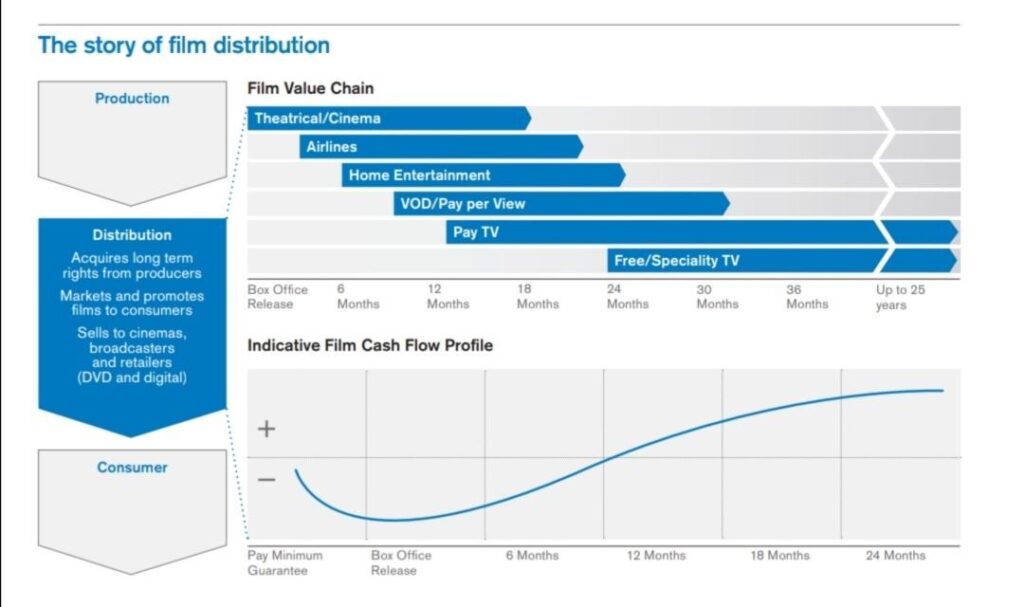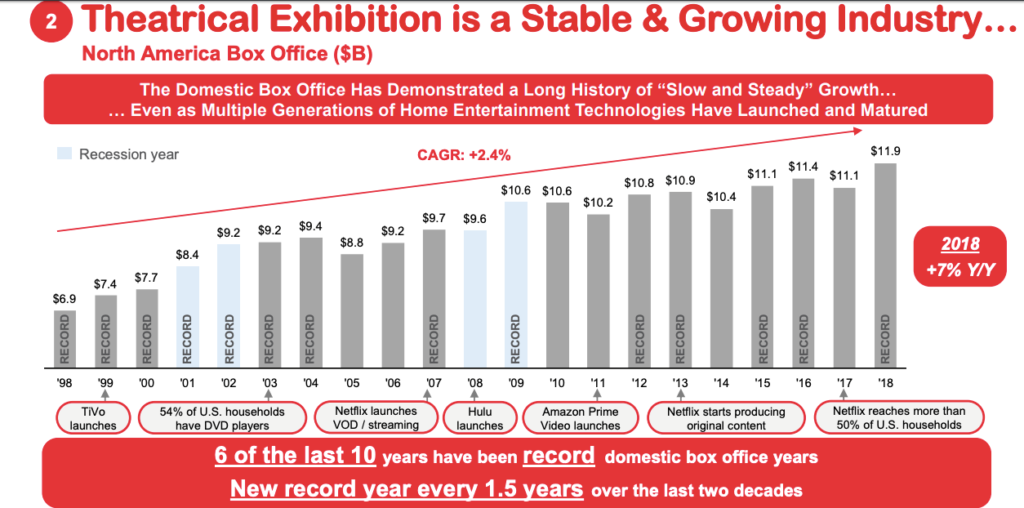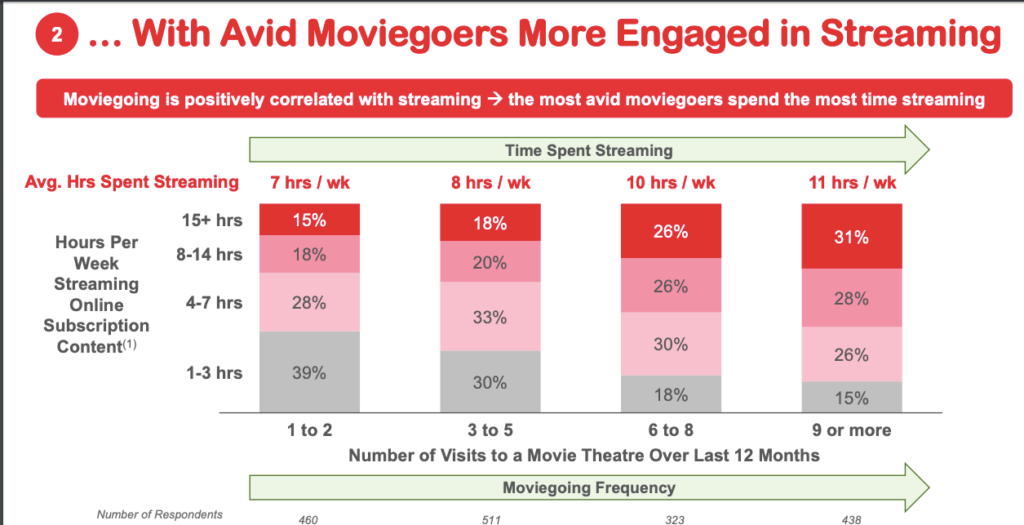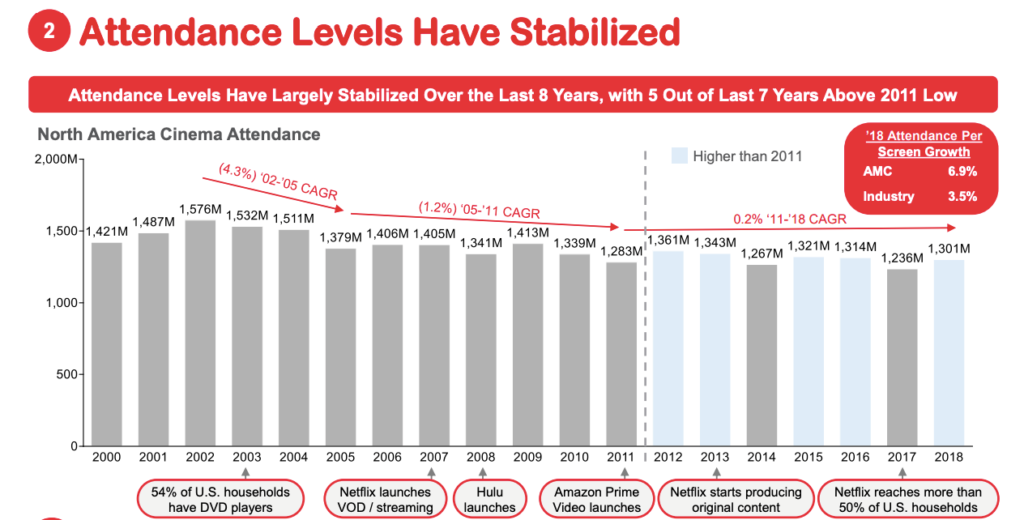Click to download the pdf version of this article: OTT Vs Cinemas
Scroll back to the early 2000s. Imagine that you as a builder have successfully delivered multiple projects during the boom phase till the sub-prime crisis hits the world. Unaware of how severe the crisis would be you start to build your marquee project somewhere in the poshest area of the country, let’s say, maybe Mumbai. Fast forward to 2010 and you see your economy starting to wobble and where will the impact first be seen? Real Estate! People are sensing the fear coming their way and so do you. You still continue promoting and try to sell the flats in your marquee project. The initial response is great but tables turned real soon and the reality seeps in.
There is a peculiar phenomenon that takes place that you hardly have 10 buyers for 100s of properties that are lying vacant. Unlike everyone else, you have risked everything that you gained over the years into this marquee project only to know that you would have to sell it at whatever price comes your way so that the property and your money is not blocked for ages! Distress selling is what this whole situation is known as and this is what the producers are facing right now.
Before we take the discussion ahead, let’s analyze the distribution flow of a movie:
The Story of Film Distribution

At the top, you have the production house. The production house has the creative rights to produce the film, purchased from the script writers. They invest money in hiring the talent, directors, cast and crew, costumes and sets apart from footing the bill for promotions and advertising too!
Then we have the distributors. The biggest of them being the theatrical/ cinema houses. Home entertainment comprises of Direct to Home (‘DTH’) as well as Streaming platforms. And then of course the end consumer, who pays for the content.
Now, major chunk of cash flows for the production house comes from theatres. This is what we call the box office collections. And Indian cinemas are replete with examples of INR 100 crores box office collection in the first week and so on! Box office collections are generally on a post-tax profit sharing model between the distributor and production house. So that is roughly INR 35 crores in the first week itself (i.e. INR 100 crores minus 30% tax is INR 70 crores which is generally shared in the ratio of 50%-50% between the theatres and the production houses). Whereas reports tout the deal between Rising Sun Films and Amazon Prime to be around INR 35 crores (which will be paid to the production houses), and that too for exclusive rights!
It is no secret that box office collections make up a significant portion of the revenues of a media production company.
So that begs the question, why would they choose OTT?
Now, imagine yourself as a budding movie producer. Your movie has had a production cost of INR 20 crores and you are stuck in the dilemma of whether to spend additional INR 5 crores on marketing and then hoping for a good box office response (INR 30 crores of net sales) or directly selling the movie at 24 crores to any of the OTT (over-the-top) media platforms (for example, Netflix, Amazon Prime, Disney+Hotstar and so on) and all of this considering you are unsure of when theatres will be allowed to open up!
For some of them the answer is quite simple.
“Free up the money because now is the question of survival!”
“Hedge the money right now, because obviously, no one wants to play with the downside risk.”
The Coronavirus pandemic resulted in malls and cinema halls being the first to shut, and last to reopen. And even when they do reopen, the panic and fear amongst people would be so high, that box office collections would certainly not be as expected. Fewer seats, lesser screen time due to disinfection of theatre post every run being the major contributing factors. So that leaves production houses with only one option, ergo home entertainment channel.
But this means, capital safety is more important than profitability. Hence, you might have seen a few movies (take for example, Gulabo Sitabo, Shakuntala Devi or even Jhanvi Kapoor starrer Gunjan Saxena – The Kargil Girl for that matter) signing contracts with the OTT media platforms wherein they decided to skip the theatrical release and directly release their movies on online platforms.
Why not a DTH platform?
The reason for the producers to choose an OTT platform over DTH players is that DTH in our country is fairly fragmented and has higher friction when it comes to onboarding new customers. Whereas OTT is literally a click away and amazon prime boasts of a presence across 400 cities and towns in India.
But even then, the math doesn’t seem to make sense. Why settle at such a hard bargain, when you could’ve probably waited a few more months and released over theatres, before selling the rights to OTT. Unfortunately, production houses have to pay royalty to the creative team, the artists crew etc. And profits from one movie generally flows into the purchase of content rights for their pipeline movies.
Internet penetration and untapped territories:
Thanks to the internet accessibility brought by Jio, India is online and hungry for content. Let’s deep dive into the stats for the same:

Credits to this data and smart phone revolution, video streaming apps started popping in dozens. The space now has every major technology and telecom company with their own video-streaming applications with three major players fighting for market share, namely, Netflix, Amazon Prime and ‘Disney+Hotstar’.
The OTT market is set to grow by 22% reaching INR 12,000 crores in the next 4 years. According to reports from EY, the number of OTT users in India will reach close to 500 million making it the biggest market after the USA. OTT market like any other market has reached a level of saturation with new entrants facing bigger hurdles to enter the market. Companies have used innovative ways to overcome these hurdles and get a market share from buying rights of famous Hollywood movies and TV shows to combining forces like Disney and Hotstar which helps in getting the world famous Disney movies and IPL – India’s favourite sporting league on the same platform.
Empathy for cash crunched producers!
Covid-19 pandemic has caused a disruption in each and every industry leading to a cash crunch and drop in investments including by production houses. Paramount pictures, one of the biggest production houses in the world and Martin Scorsese faced the same problem with their new movie “Killers of the new moon” starring Leonardo DiCaprio and Roberto De Niro which will cost nearly US $200 million to make. Apple decided to provide the funds for the movie on the condition that it would be premiered on their new OTT platform ‘Apple TV’. This is a win-win situation for both sides with the production house getting the required funds and Apple TV getting a blockbuster to pair up with its recent acquisitions of other movies making it an attractive platform for movie buffs.
With even the bigger production houses facing the heat of the lockdown (like the one mentioned in the above example), one could only imagine the situation a small budget producer would be facing!
Seasonality of business:
An OTT platform has a lot of seasonality in their business. The business flow depends upon the free time that the consumers have in their hand. The biggest entertainment in this period has been streaming platforms or as the millennials like to call it the “Home-Box office”. This lockdown was once in a lifetime seasonal business that any OTT platform could have gained and they did buy every content coming their way to make sure that this (the most profitable) opportunity is not lost!
But this by any means does not lead us to the ultimate destruction of cinemas!
It might just be that the OTT platforms are rising exponentially and could pose a major threat to exhibitors like PVR Cinemas and INOX Leisure, but these giants are here to stay for longer than you can think. Let us analyze this whole battle with who saves the world (i.e. Production Houses), is it Thanos (OTT media platforms)? Is it ‘The Avengers’ (theatres)? Or for once, would we have Thanos joining ‘The Avengers’ (Co-existence)?
Correlation of movie going to online streaming:
Netflix and the other OTT platforms are not new to the world and the fact that Netflix has been in business since the last 23 years and has started to produce its original content movies and TV shows since the last 6 years has had minimal impact on the viewership and the box office numbers. Let’s dig down deeper and have a look at the figure below for further analysis:

Now some people might just think that the world would start to look completely different post the Coronavirus and everything else in the past might just be a redundant form of data set.
Well yes, it is true that a pandemic like Coronavirus is different than what the world has faced in the past and many people might just believe that this would be the turning point for the OTT platforms, but let’s just wait before we could draw some conclusions for the same.
What did the world do the most throughout the lockdown?
Well, you guessed it correctly!
Netflix and chill!
Hence, before we take the discussion ahead, let’s take a closer look into the info-graphics that are attached below:


A really new dimension can be considered after looking at the above-mentioned figures. The viewers really do not mind going to a theatre or streaming online till the time they are getting access to content. The medium through which the content is shown is really not that an important decision for the viewers. If there is a good movie or their favorite actor’s movie released onto the theatres, they will go for it whether they would have to buy a ticket or buy a subscription.
The fact that movie going is positively related to online streaming is a really good starting point for any exhibitor to showcase their movies on their platforms because they know that there will be a section of the population who will always be willing to experience the grandeur of the cinemas.
IF NOT CINEMAS, WHERE WOULD FAMILIES GO?
Have you ever seen any animal or a bird released from its cage?
That moment of happiness is truly something worthwhile experience. All of us at some point are going to or have witnessed this joy of freedom!
But when things start to normalize again and people start getting their lives back to normal, which are the options that a family could consider while going out?
Let’s take a look at the options which would have been or are available:

In the above-mentioned figure, the average cost of going out for a family of four to various entertainment options have been listed down. We can clearly see that out of all the options going for a movie and spending time with family is by far the cheapest option available. Besides, the rest of the events are cyclical events and only occur for the duration of certain months during the year as against the movies.
Now since the coronavirus has really high transmission capabilities, it is quite possible that sports could continue on empty grounds, possibly till the time a vaccine is not found. Theme parks and concerts are mass gatherings events which, given the circumstances, have really bleak chances going ahead.
You might be just thinking that full house box offices have been the norm and the criteria of social distancing would not be met in the cinema houses too but the occupancy rates speak differently!
The average occupancy rate stands at 28% for Inox and 31% for PVR. These are two biggest movie theatre chains in the country and their occupancy rates suggests that there is enough room for social distancing to happen. The occupancy rates show that the theatres have skewed uneven viewership. The bipolar nature of the occupancy rates suggests that there are times where the theatres are jam packed maybe during the first weekend when the movie has released and on the other hand there are times when there is literally no one in the theatre maybe during the fifth or sixth week when the movie is just about to be launched on the television/ OTT platform. This could change to an evenly skewed distribution of viewers and could actually make room for “socially distanced full houses.”
As we dive deep into the article, we will figure what could possibly be the occupancy number that could be really important for the theatre chains to work on break even basis, if the need be!
But before that, let’s dive into some other interesting things too!
Base Formed For Exponential Growth:
“Threats do not work with people who have nothing to lose!” – Maduro Ash.
Of course, there is some amount of threat and competition to the theatre houses from the OTT platforms but the fact of the matter is that the industry still has enormous potential to grow going ahead! Let’s take a look at the figures mentioned below:


With over 2000 movies releasing every year and a footfall of about 1930 million people (2nd highest in the world after China, which is at 2178 million footfalls), India is any cinema exhibitor’s dream place to work in and the fact of the matter is that there is still so much room for expansion and consolidation! 8 screens per million of population as against to 125 screens per million in the US, it seems that India still has a lot of ground to cover.
Now let’s also look at the average ticket spend and spend per head on food as compared to a developed market like the US:

The scope for increase in revenue for these companies is immense given the costs are not going to proportionately increase going ahead. For example, let’s say that ABC Cinemas sells only popcorn in their food and beverages menu. They sell one thousand units of popcorn in a year to their viewers. The cost of making these popcorns as of today is INR 20. The popcorn is sold at INR 80 (considering something around a whooping 400% margin on cost of food beverages according to the investor presentation of PVR and Inox). The profit would be INR 6 lakhs. Now let’s fast forward to 2030. Inflation kicks in at an average of 5%-6% and the cost price of the popcorn increase to INR 35. However, the amount of room that PVR and Inox have, they can easily double or triple up the prices for the same popcorn but still would be cheaper than the one in the US. They decide to sell at INR 200. Now considering the volume still remains the same the profit would be something around INR 16.5 lakh rupees (a profit margin of nearly 500% on cost of food and beverages).
All of these small streams of revenues (similar to cheesy dip contributing a whooping sum of roughly around INR 36 crores into Jubilant FoodWorks P/L) ultimately help in becoming the differentiator if channelized in a proper manner.
Exhibitor V/S Content Buyer:
There are about 2000 movies released in India itself and maybe crossing a lakh of movies worldwide. The real question arises is how many movies can the OTT platforms actually buy?
This is where the reality enters in the whole scheme of things!
The fact the neither PVR nor Inox actually buy the movie rights to depict the movies but every movie that an OTT platform wants to showcase has to be bought is a reality check going ahead. It is true that certain OTT platforms are been backed by the richest pockets in the whole world but after a point the cash infusion process will not convert into a cash generation process. In other words, it will be simply burning cash without an equivalent return on investment.
Just as land is fixed in nature, the total addressable market size for the OTT platforms will not change too soon in the near future considering the fact that approximately a dozen people can watch the movie on one subscription but for every person who wants to watch the show in theatres, have to pay for their own ticket! Consider this example. If a family of 4 watches a movie in multiplex, it spends around INR 800/- for 4 tickets. Now watching it on OTT platform, the entire family can actually buy a ticket through one user id for a whole family of four. Hence, a movie with a potential to earn INR 200 crores in multiplex would possibly end up earning only INR 75-100 crores due to people watching from a single user ID.
Further, the OTT platforms would need to have a subscriber base of at least 25 million paid subscribers in order to generate substantial revenue from pay-per-view model. As per the latest reports, Netflix currently has 2 million subscribers in India. A movie released on OTT platforms might not get so much traction from rural India where the penetration of premium OTT platforms like Netflix is really low but these rural Indian towns and villages still have a cinema house for the movie to be premiered!
Hence, it could just be a one-off situation that the OTT platforms are trying to use to their advantage. They might be trying to temporarily infuse in money, buy content, cut of the exhibitor and directly release it on their platforms so that they can gain as many users as possible through this process.
The OTT platforms might have to soon start thinking about this because after a point the increase in the number of daily fresh subscribers will flatten but approximately five new movies would be releasing every day which will ultimately go to the theatres if the producers do not get a good bargain for their content from the OTT platforms. Moreover, the movies that actually define the meaning of grandeur (for example, Bahubali or Avengers or any Sanjay Leela Bhansali movie), these movies will never want to skip the theatrical release. The OTT platforms will never look to buy content at such high costs and moreover the producers would want to aim a significantly higher return on investment too rather than just a mere 10-20%.
But is adding customers the only thing or retaining them is a task too?

Imagine this okay? How many of us would have taken the free subscription of Netflix from various credit cards and modes on trial basis because you loved the content but exited Netflix just before the paid period would start? Or even pay a month’s subscription and leave?
“We must continually add new memberships both to replace canceled memberships and to grow our business beyond our current membership base. “ – From Netflix Annual Report.
“If we do not grow as expected, given, in particular, that our content costs are largely fixed in nature and contracted over several years, we may not be able to adjust our expenditures or increase our (per membership) revenues commensurate with the lowered growth rate such that our margins, liquidity and results of operation may be adversely impacted. If we are unable to successfully compete with current and new competitors in both retaining our existing memberships and attracting new memberships, our business will be adversely affected. Further, if excessive numbers of members cancel our service, we may be required to incur significantly higher marketing expenditures than we currently anticipate to replace these members with new members” – Netflix Investor Presentation.
OTT platforms have so much competition within themselves that to maintain the market share and to make sure the upcoming fiscal’s developmental expenses are in line with the subscription revenue, they have no other option to be out of the box and create/ buy any good quality content coming their way. The loss of theatres is just a by-product of the fierce competition that OTT platforms face!
Also, OTT platforms have been innovating relentlessly to expand the audience universe as more and more people stay indoors. While the American companies have the advantage of tapping into their foreign library, Indian companies have not been behind by adopting pioneering ways of producing shows and podcasts. Zee5, the OTT platform of Zee Entertainment Enterprises Ltd are set to launch shows like Bhalla Calling Bhalla, Never Kiss Your Best Friend (Lockdown Special) and Kaalchakra which have been shot entirely in the homes of the actors. Eros Now, another OTT platform acquired ‘A Viral Wedding’, an eight-episode mini-series shot by actors themselves on their phones and GoPro cameras. Flipkart video introduced virtual shows like Entertainer No.1, a show hosted by Indian actor Varun Dhawan. While theatres can just stick to movies, OTT platforms have the freedom to move from movies to shows to series making it easier to produce content without compromising on originality and quality.
Forgone opportunity for incremental revenues:
But taking the OTT route comes at a cost. It can kill the incremental revenue that is generated even in months after the release of a movie. They’re from screening on TV channels. And to a small extent, pay per use channels. Now we still remember the excitement when we came to know Bahubali will be screened on our favourite TV channel, despite having watched it in the theatre. The feeling of watching it from the familiarity of our couch, reliving our favourite scenes from the movie was a sublime feeling. But now, very few cable channels would even want to purchase the rights to screen. Their content has just depreciated that quickly. The re-watch value, the incremental excitement from it, all of a sudden went down to zero! And if lesser people are willing to watch it on a TV channel, lesser the chances of attracting advertisers to them.
In the next section, let us see how theatres become a platform for multi-bagger returns!
Which Platform Is Better For Good Content Based Movies?
“Content is the real king” and people will pay for it wherever it would be available for viewership! Before we take up the analysis any further let’s look at the figure below:

Theatre houses are and will be the delight and the go to choice of the producers given the returns opportunities that are provided through the theatres. Typically, if a movie directly goes for an OTT release and if the production team believes in the content, they would never want to bypass their biggest revenue generation source. The numbers in the above-mentioned figure are staggering! If the content is good, it will earn the producer truckloads of money because the first point of acceptance is the general public watching the movie unlike for the OTT platforms where the first point of acceptance would be from the content team.
With such less screen per million, the movies are able to produce such unbelievable profit margins, so imagine what would the box office numbers turn out to be when the industry starts to grow and mature. The loss of opportunity is more for the production segment of the movie industry than the exhibitors themselves. The risk of acceptance of a movie in the public is high given the investments made but considering the rewards that can be made, it is a risk worth taking, considering how easily the movies touch up 100 crores box office revenues without much fuss being made about it.
Secret superstar was able to generate approximately 65x of its cost of production while the other movies mentioned above also were able to achieve anywhere between 4x to 13x on their cost of production. Now suppose, had Secret Superstar been directly sold to an OTT platform, at maximum, it would have been able to earn 2x on their cost of production but 65x profitability figures is a number which only the theatre chains can provide given how they have converted the perception of watching the movies!
Since we have talked about how it is win-win situation for both producers and theatre chains to be together so that both could complement each other going ahead and make sure staggering numbers on the box offices are produced, we need to understand till the time a cure is not found or till the time the situation does not normalize, what could be the occupancy rate, at which a theatre chain would not mind operating at?
Optimal operational capacity to kick-start theatrical chains:
Let’s look at some numbers below going ahead!

The above exhibit is compiled over per screen basis. What we tried to figure out is on a per screen basis how much will Inox have to earn to make sure that they are at least breaking even. The main aim of cinemas would be to cover the fixed cost incurred to show a movie (for example, lease rent, employee expenses, cost of maintenance of a cinema screen and so on). The most important thing to note in this detailed analysis is that the occupancy rate is around 28% of Inox currently and 31% for PVR Cinemas. The theatre chains could run on a per screen break-even business (including all the operating and financial costs) and the occupancy rate to achieve the above mentioned figures would be something around 22.5%-25%. The theatre chains would be walking on thin ice if the occupancy number falls below 20% as it would not be operationally possible to function going ahead, but again, the concept of some cashflows would be better than no cash flows as it would also kick in to minimize the losses that they are currently facing without any business functioning.
Hence, we believe that if 50% seats are negated for social distancing, a 50% occupancy is enough for any cinema house to function without making losses on per screen basis for a whole year. Likewise, if 35% are allowed to keep the social distancing norms intact, 70% capacity will have to be filled to ensure that they are not losing money on per screen basis.
Full capacity and 28% occupancy (uneven distribution of viewers) or half capacity and 50% occupancy (even distribution of viewers), the end result could be having “socially distanced full houses” going ahead and why do you think, would the producers end up increasing the theatrical window to make sure the same amount of money could be earned while keeping the social distancing norms in place?
But would people go outdoors considering the fear?
Let’s look at the figure below that shows the graph of various countries:

People in India are considerably scared to step out of the house and even if the lockdown will be lifted gradually in due course, the scars of the lockdown are too deep. Hence, people would prefer OTT content for some more time considering the threat of the virus remains majorly due to transmission of the virus from human to human. Consider China, during the last week of March, more than 500 theatres which had opened up had been asked to shut down because of the risk of transmission and hence the OTT platforms have been presented with a once in a blue moon opportunity to milk the situation and develop a formidable user base by rigorously adding quality content going ahead!
What Lies Ahead!
The movie production industry has typically two kind of movies. The first of them are the movies which are backed by real big production houses and their stardom demands a theatrical release (consider the shifting of Ranveer Singh’s 83 or Akshay Kumar’s Sooryavanshi or Disney’s Black Widow) and on the other end, there are small budget movies made hoping to leave their mark on the film industry. It might be that some of the producers are willing to forgo their biggest revenue generation mode to make sure that they could bypass the coronavirus impact without suffering much losses but the percentage of producers actually willing to do this for a long sustainable period of time would be minuscule when compared to the size of the industry.
The profitability margins that a producer could potentially earn through a theatrical release is something which cannot be earned in any other industry and no producer would want to miss such opportunities over a prolonged span of time considering the fact that record breaking revenue is done on box office every alternate year and considering that the Indian theatrical industry still has so much room for exponential growth going ahead!
The OTT platforms have bought something around 10-20 movies in India during the lockdown period which have accepted to skip the theatrical release and directly release on their platforms. No doubt about the fact that OTTs are here to co-exist but the above number is not even 1% of the total movies produced throughout the year in India. It would start worrying the exhibitors when the number would shoot up to something around 15%-20% (at least 400-500 movies each year). Till that time, cinemas will be the preferred option considering the want of people to go out. The cinemas still will continue to have a major share in the industry and would still be a first choice for most of the production houses but for the producers who are from the “risk averse” investment categories, they will want safety of capital rather than profitability on the investments.
The theatres add up to the grandeur of the film industry and people want to be a part of this whole experience going ahead. Would you want to watch a Marvel movie on OTT platform during your first viewing?
Of course NOT!
Because you would be able to witness the joy of watching the movie with people who are filled with the same emotions as you are during the movie!
Because you obviously would want to be a part of the cheers that went around the theatres when Captain America said “Avengers, Assemble!”
And just as you know, K.G.F Chapter 2, has already announced its theatrical released date last week!
But there are also talks of Akshay Kumar’s ‘Laxmmi Bomb’ to have an OTT release for a record-breaking value!
Theatres have survived recessions and technology disruptions; this pandemic is one beast fuelled by content. This might be the first time that theatres have ever faced the largest conglomerates (hosting OTT platforms) with deepest pockets, but in this war, the producers become the kingmaker and their decision will rule the industry going ahead!
Liked the Article you just read? Show us your support by clicking that like button and sharing it with your friends! Also don’t forget to leave your thoughts about the article in the comment section below.
You can become a part of our mailing list by clicking here





Funtastic study and observations written by writers with good information and research. The projections are given properly directions